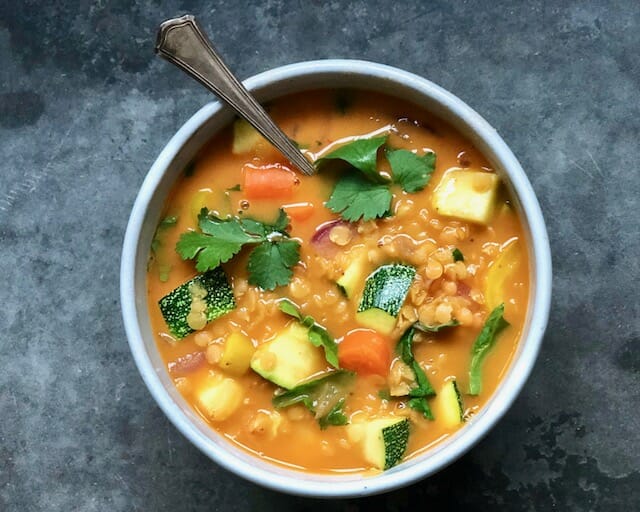Beans, peas, and legumes are one of the world’s most economical foods. Consider this: a serving of lentils will set you back about 10 cents. That’s a seriously steep discount from any type of animal protein. Pulses, as they’re known, are deeply satisfying and enormously nourishing. They’re also very easy to cook, particularly with the aid of a slow cooker, which is why I put together this guide to slow cooker beans and legumes. It makes perfect sense, since dried beans, peas, and legumes are excellent cooked gently; a slow cooker allows you to do so without having to watch the pot.
Guide to Slow Cooker Beans and Legumes
In this guide, you’ll find the results of a deep dive into slow cooking pulses, including:
-
Black Beans
-
Pinto Beans
-
Cannelinni Beans
-
Black-Eyed Peas
-
Chick Peas
-
Lentils
Should You Soak your Beans First?
You’ll note that none of the instructions in this guide call for pre-soaking. After much experimentation, I found little upside to soaking beans (other than the fact that it cuts down on cooking time). I gathered up my data and assembled this printable slow cooker guide, with suggestions on ratio of beans to water, seasonings, and recipe ideas. Scroll down a little further and you’ll find more on how to store and prep beans once you’ve run them through your crock pot.
How to Store Beans
Once beans and legumes are cooked, store them in some of their cooking liquid in a covered container in the refrigerator, where they will keep for 4 to 5 days (you know when it’s time to toss them because they get stinky). You can store cooked beans in a resealable bag in the freezer for several months. Be sure to label and date the bag so you can keep track of what you have.
How Healthy Are Beans and Legumes?
Despite trendy diets hat might have you believe otherwise, beans and legumes are seriously good for you. Every last one is high in fiber, something most of us are lacking. They are universally low in fat and vary in vitamins and minerals depending on the variety:
- Lentils are high in protein.
- Kidney beans are rich in antioxidants.
- Black beans are full of iron.
- Chick peas are heavy hitters when it comes to folate.
One important side note about slow cooking kidney beans: They contain a toxin that can cause GI distress, so you must bring them to a full boil on the stove top for 10 minutes BEFORE you get them going in the slow cooker. After boiling, drain, add to the slow cooker with water, and then cook until tender.
Beans are Enormously Versatile
The possibilities for how to use beans and legumes in your cooking are endless.
- Turn them into soup, such as this Easy Black Bean one.
- Toss them with a vinaigrette along with diced vegetables or greens for a simple salad.
- Puree them with olive oil, garlic, lemon, and salt, for a hummus-like spread.
- Toss them with olive oil, a squeeze of lemon, and fresh herbs and serve under a piece of grilled fish.
- Put them on a corn tortilla and top with a fried egg.
How do you do beans? Chime in below in the comments section.
Now that you’re armed with a guide to slow cooker beans and legumes, check out these slow cooker recipes:
Lentil Tacos with Indian Spices
